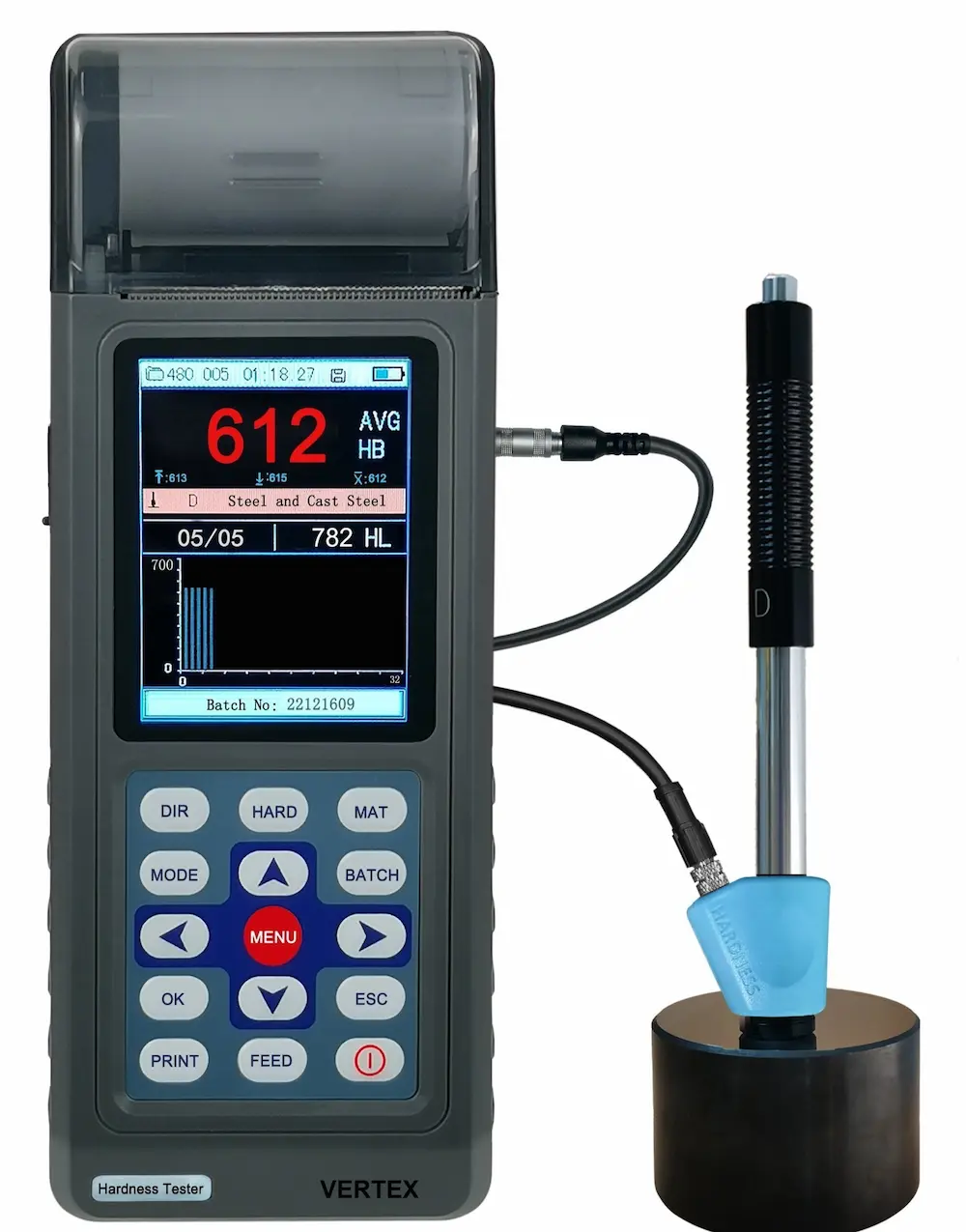Portable Hardness Tester HL-1000

Portable Hardness Tester HL-1000
Overview
A Leeb hardness tester measures hardness by assessing the rebound velocity of an impact body after it collides with a test material. The device uses a spring-loaded mechanism to propel a tungsten carbide ball (the impact body) onto the test surface at a known velocity. The ratio of the rebound velocity to the impact velocity, multiplied by a factor, determines the Leeb hardness value.
Leeb Hardness Tester model HL1000 is a unique hardness tester with so many features which no other brand can offer, the main feature is that the instrument display Hardness Value in all available scales on one screen at the same time. Hardness Probe has robust design for longer and error free performance.
Specifications
| Measuring Range | HLD(170~960), HRA(59~85), HRB(13~ 100), HRC(18~68), HB(19~655), HV(80~976), HS(32~100) |
|---|---|
| Hardness Scales | Leeb (HL), Brinell (HB), Rockwell A (HRA), Rockwell B (HRB), Rockwell C (HRC), Vickers (HV), and Shore (HS) |
| Measuring direction | 360 ° (vertically downward, obliquely downward, horizontally, obliquely upward, vertically upward) |
| Measuring materials | steel and cast steel, alloy tool steel, stainless steel, gray cast iron, ductile iron, cast aluminum alloy, copper zinc alloy (brass), copper tin alloy (bronze), pure copper and forged steel |
| Standards | ASTM A956, DIN505156-1, GB/T17394-1998 |
| Display | 320 × 240 TFT LCD screen |
| Data storage | 510 files, 46 to 215 groups (impact times 32 to 1) |
| Communication interface | USB2.0 (RS232, RS485) |
| Charging Power supply | 5VDC, 220VAC |
| Charging time | 2-3hour |
| Work Voltage | 7.4V,Li(2000mAh)Battery |
| Ambient temperature | 0~40℃ |
| Storage temperature | -25~70℃ |
| Continuous Working Period | about 20 hours, and the standby time is 80 hours |
Features
- Multiple language switching between Simplified/Traditional Chinese, English, and German, with menu based operation
- Adopt a proprietary dual bin dustproof design to ensure that the main engine bin is not affected by dust
- Type-c USB and RS485 communication interfaces can easily connect PCs, industrial control computers, or PLCs
- The main interface displays two hardness scales.
- There are three modes switching on the main interface (histogram mode, full hardness mode, and curve mode).
- The production batch number setting function allows for self-numbering of measured workpieces, facilitating statistical recording.
- Browse for any hardness scale conversion of status measurement data, which is convenient and fast.
- It can be equipped with 7 different impact devices, which do not require recalibration during replacement and can automatically identify the type of impact device.
- Support the measurement of multiple hardness systems and three strength values.
- Built-in domestic and foreign hardness conversion tables to meet the different needs of customers.
- It can store 510 files, with 46 to 215 groups of single measurement values, average values, measurement dates, impact directions, times, materials, hardness system, and other information for each file (32 to 1 impact times).
- The upper and lower limits of hardness values can be set in advance, and automatic alarm will be given when the limit is exceeded, facilitating the needs of users for batch testing.
- Indication software calibration function.
- Built-in high-performance lithium battery and charging control circuit, with a battery capacity of 2000mA.
- Computer software can be equipped to support data query, storage, statistics, histogram display, and other functions, and stored in Excel format
Images
